Knes 259 Anatomical Terminology & Planes of Motion
1/20
There's no tags or description
Looks like no tags are added yet.
Name | Mastery | Learn | Test | Matching | Spaced |
|---|
No study sessions yet.
21 Terms
What does anatomy mean
Anatomy= Structure
What does physiology mean
Physiology= function
What are the 6 levels of structural organization in the body
Starts with chemical level
then cellular
then tissue
then organ
then system
then organism level

3 systems we study in knes 259
skeletal, muscular, nervous
Axilla
Armpit
5 Regions of the body
head/neck
upper limb/extremity
thorax ,back, abdomen
pelvis, perineum
lower limb/extremity
What is the anatomical position
everything is pointing forward (head, eyes, palms, feet, toes)
used to describe most parts of the body in knes
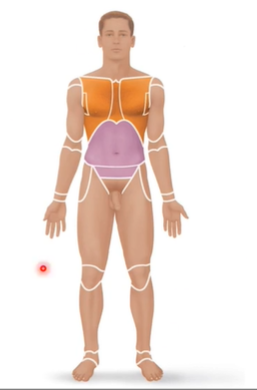
The 3 Anatomical Planes
3 major ones. all 90 degrees to each other. even if person rotates the planes stay the same regardless of position cuz everything is relative to the anatomical position
Midsagittal plane
Frontal
Frontal plane
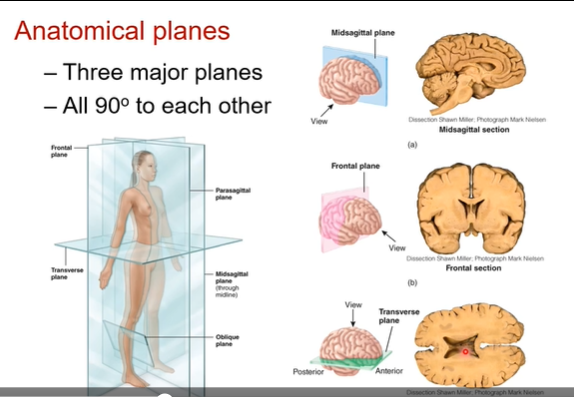
3 anatomical directions
Superior and inferior (top and bottom)
Medal and lateral (going in towards the midline as medal and going away from the midline as lateral).
Distal and Proximal (refers to the upper and lower limbs. it coming closer to the attachment point of the lower limbs or closer to the torso). ex in this case proximal would be something towards the shoulder. something distal is closer to the digits. humerus is proximal to anula/radius. the anula/radius is distal to the humerus
note anatomical directions are relative to other organs. ex stomach is superior to small intestine and inferior to the lungs
Another name for inferior can be caudal (closer to the tail or inferior part of torso or body). Another name for superior could be cranial (closer to the head)
you have to use caudal and cranial together. and superior and inferior together.
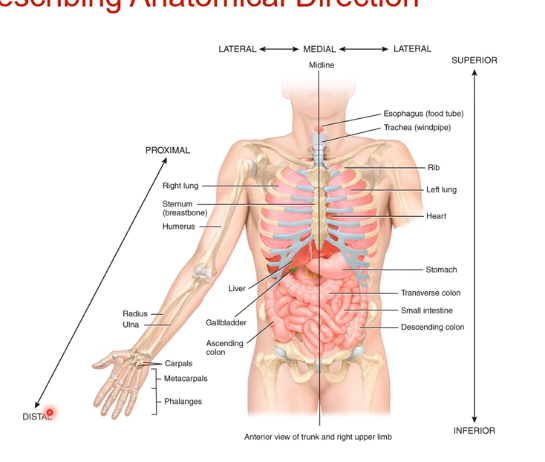
Anterior vs Posterior (Ventral vs Dorsal)
Describes more anatomical directions.
Posterior (dorsal) =nearer to the back
Anterior (ventral)= nearer to front
used in reference to how u view frontal plane too

What naming do we use for the hands and feet? Define each
Dorsal/dorsum vs Palmer or Dorsal vs Plantar = naming
Dorsal/dorsum of the hand= posterior part of hand
Palmer side= palmer surface of the anterior side (in anatomical position) of hand
Plantar=underneath the foot/sole
Dorsal/dorsum of foot= top of the foot
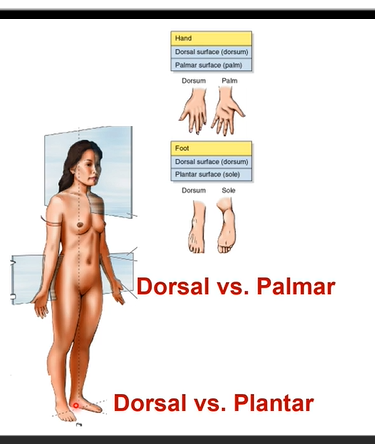
3 layers of the body describe
Superficial= nearer to surface/outside of body
Intermediate= btw a superficial and a deep structure
Deep= farther from surface
again it is all relative. the skin is muscle is superficial to what..
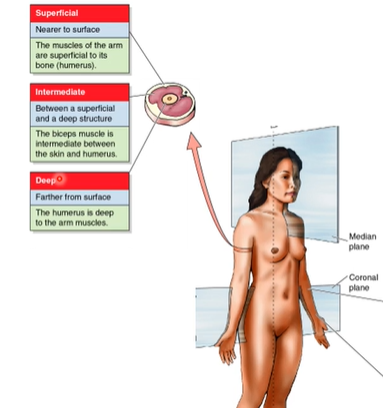
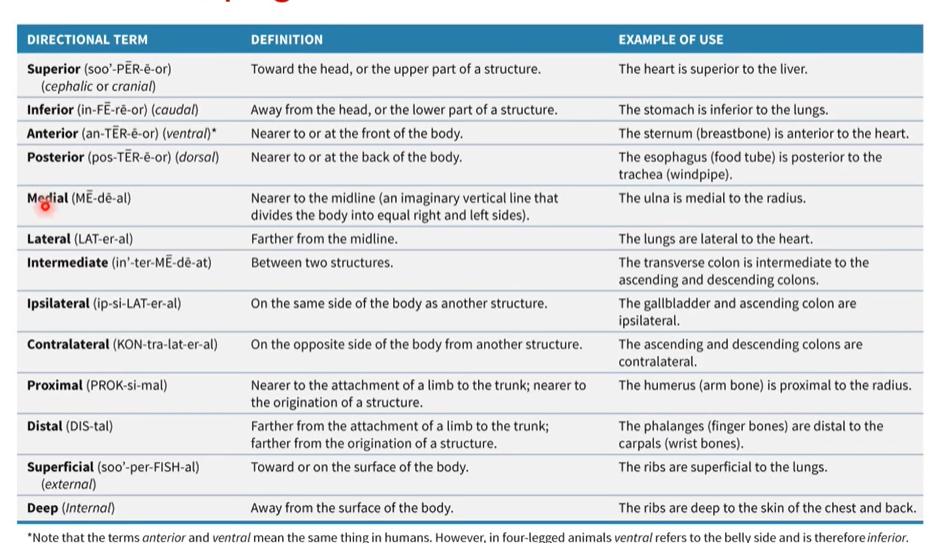
summary including ipsilateral and contralateral
summary of terms that work together:

2 key things to describe human movement. Where must be the action happen?
axis of movement
action/plane of movement
The action occurs in the plane perpendicular to the axis it moves about
There are 4 axis of rotation, name the 1st and the axis it goes with and what it achieves
Medial-lateral (ML or “mediolateral”) axis. It goes with the Sagittal plane of motion. The achieves flexion (decreasing the joint angle) and extension (increasing joint angle)
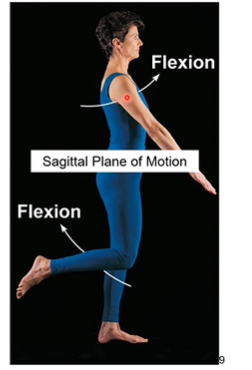
There are 4 axis of rotation, name the 2nd and the axis it goes with and what it achieves
Superior-inferior (SI or “vertical”) goes with transverse plane of motion. Goes with rotation like rotation of the neck, head, or the thigh.
Direction of the rotation depends if its moving away or towards the midline. Medial/internal rotation= thigh turning/rotating towards the midline. Lateral/external rotation= thigh turning/rotation away from midline
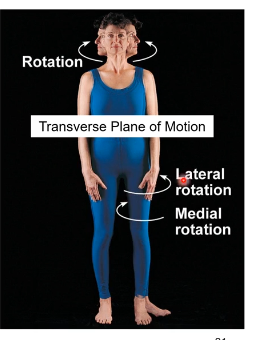
There are 4 axis of rotation, name the 3rd and the axis it goes with and what it achieves
Anterior-posterior (AP or “Anteroposterior”) axis goes with frontal plane of motion. Achieves abduction ( move away from midline/anatomical position) and adduction (adding that part to the body, returning it to anatomical position) of the shoulder or hip joint

There are 4 axis of rotation, name the 4th and the axis it goes with and what it achieves
A combination of the Medial-lateral axis and anterior posterior axis makes a circular motion called circumduction. Happens in frontal and sagittal plane of motion.
It is a combination of abduction and adduction and extension and flexion. Happens with anything able to do abduction/adduction and extension and flexion like the shoulder or finger. you can move both in circles cuz u can abduction/adduction and extension /flexion can happen with them
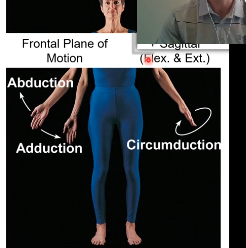
A special movement called gliding is seen where usually and which axis does it fall into.
carpal bones of the wrist. doesn’t fall into any of the 4 axes of rotation

A special movement called inversion and eversion happening at the ankle exists. Describe inversion and eversion
inversion= sole/plantar side of foot facing inwards
eversion= sole/plantar facing outwards
